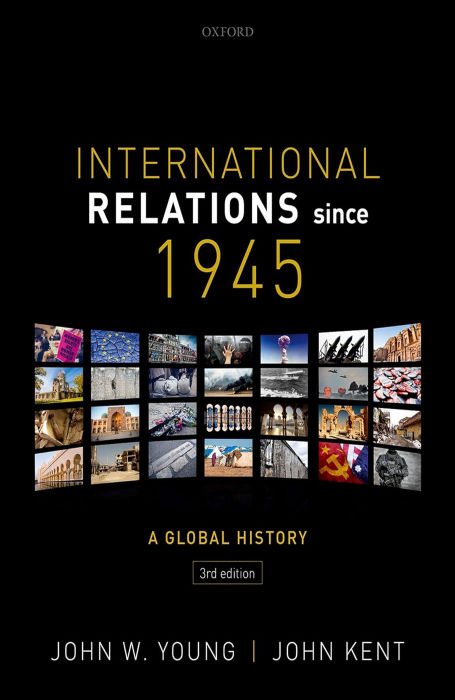Books
John W. Young, John Kent
International Relations Since 1945
John W. Young and John Kent’s International Relations Since 1945 stands out as an accessible yet comprehensive guide to the world’s most turbulent decades. With clarity and depth, the authors chart the seismic shifts from the Cold War to the “Age of Uncertainty,” making sense of global conflict, cooperation, and change. This book is a vital companion for students and anyone seeking to understand the forces that have shaped our contemporary world. Its blend of narrative, analysis, and up-to-date case studies brings the story of international relations vividly to life.
Now in its third edition, International Relations Since 1945 offers a chronological and regional approach to the key events and trends that have defined global politics since World War II. Young and Kent guide readers through the Cold War’s ideological and military confrontations, the process of decolonization in Africa and Asia, the rise of European integration, and the shifting balance of power in the post-Cold War era. The book is particularly attentive to the interplay between international and domestic developments, as well as the evolution of the global economy and the growth of interdependence among states.
The latest edition includes new chapters that address the most pressing issues of the last decade. These cover the chaos and conflict in the Middle East, the emergence of ISIS, Brexit, the Trump administration, and the rise of China and Russia as challengers to the established global order. The authors also explore the impact of globalization, the fragmentation of the international system, and the persistent threats to stability in both the West and the East. Throughout, the book is structured to help students, featuring biographies of key figures, chronologies of major events, and a careful balance of narrative and analysis.
International Relations Since 1945 is widely praised for making complex historical and political developments understandable without sacrificing nuance or detail. While some critics note a continued emphasis on East-West relations and a traditional focus on the Cold War, the book’s expanded coverage of regional issues, economic trends, and new global challenges ensures its continued relevance. With its clear structure and engaging style, Young and Kent’s work remains an indispensable resource for anyone seeking to grasp the patterns and possibilities of international relations in the modern era.

